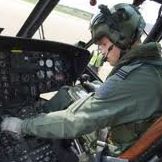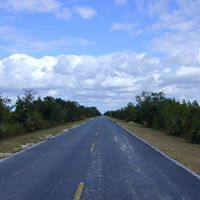William D Anders
age ~78
from Cottondale, AL
- Also known as:
-
- William David Anders
- Bill D Anders
- Nilliam D Anders
- David Anders
- Phone and address:
-
6720 Jenean St, Coaling, AL 35453
2055533479
William Anders Phones & Addresses
- 6720 Jenean St, Cottondale, AL 35453 • 2055533479
- Tuscaloosa, AL
- Hartselle, AL
Work
-
Position:Food Preparation and Serving Related Occupations
Education
-
Degree:Bachelor's degree or higher
Emails
Wikipedia References

William Anders
Resumes

William Anders
view source
William Anders
view source
William Anders
view source
William Anders
view source
William Anders
view sourceSkills:
Operations

William Anders
view source
William Anders
view sourceName / Title
Company / Classification
Phones & Addresses
incorporator
Tuscaloosa Optical Dispensary, Inc
OPTICAL DISPENSARY
OPTICAL DISPENSARY
Tuscaloosa, AL
Decatur ALF Group, LLC
Assistant Living Facility
Assistant Living Facility
Decatur, AL
Owner
Anders & Associates
Management Consulting Services
Management Consulting Services
814 Andrew Jackson Way NE, Huntsville, AL 35801
License Records
William A Anders
License #:
E030920 - Active
Category:
Emergency medical services
Issued Date:
Nov 3, 2009
Expiration Date:
Apr 30, 2017
Type:
San Diego County EMS Agency

William Anders
view source
William Anders
view source
William Anders
view source
William Anders
view source
William Anders
view source
William Anders
view source
William Anders
view source
William Anders
view sourceMyspace
Googleplus

William “Apollo” Anders

William “Apollo” Anders

William Anders

William Anders

William Anders

William Anders

William Anders
Flickr
Youtube
Classmates

William Anders
view sourceSchools:
Gilmore J. Fisher Junior High School Ewing NJ 1990-1992
Community:
Barbara Richards

William Anders
view sourceSchools:
Juniata Valley High School Alexandria PA 1969-1973
Community:
John Vitch, Lee Campbell, Jeanie Robertson, Camille Files

William Anders
view sourceSchools:
Central Senior High School East Tuscaloosa AL 1978-1982
Community:
Robin Davis

William Anders (Ochall)
view sourceSchools:
St. John Lutheran School Marysville OH 1931-1939
Community:
Joann Gall, Russell Paulmann, Paula Kevin

william anders | Vermilio...
view source
Anders William, Shiloh Hi...
view source
Juniata Valley High Schoo...
view sourceGraduates:
Lise Anders (1972-1976),
Donna Anders (1971-1975),
William Anders (1969-1973),
Matthew Cooper (1999-2003)
Donna Anders (1971-1975),
William Anders (1969-1973),
Matthew Cooper (1999-2003)

Vermilion High School, Ve...
view sourceGraduates:
william anders (1962-1966)
News

Former astronaut William Anders, who took iconic Earthrise photo, killed in Washington plane crash
view source- William Anders said in an 1997 NASA oral history interview that he didnt think the Apollo 8 mission was risk-free but there were important national, patriotic and exploration reasons for going ahead. He estimated there was about a one in three chance that the crew wouldnt make it back and the same
- Date: Jun 07, 2024
- Category: U.S.
- Source: Google

Earthrise, photo that changed how we see the world, turns 50
view source- On December 24, 1968, NASA astronautsFrank Borman, James Lovell and William Anders became the three humans who have traveled the farthest from our home planet - a record which still stands today. On board the Apollo 8 spacecraft, the trio was part of the first crewed mission to the Moon and back, a
- Date: Dec 24, 2018
- Category: Headlines
- Source: Google

Elon Musk's 'Big F**king Rocket' Is a Big F**ing Deal
view source- this did seem to be Americas greatest can-do moment. But since December 1972, at the completion of Apollo 17s mission, when Frank Borman, James Lovell, and William Anders made a Christmas Eve TV broadcast reading the first 10 verses from the Book of Genesis, nobody has walked on the moon. The Spa
- Date: Mar 18, 2018
- Category: Science
- Source: Google

EM-1 Could Be Next Apollo 8 As NASA Mulls Sending Astronauts Around Moon On Untested Rocket
view source- The three crew members of the mission, Frank Borman, James Lovell, and William Anders were the first to travel beyond the low Earth orbit, the first to directly see the far side of the moon, and the first to see our home planet as a whole.
- Date: Feb 25, 2017
- Category: Sci/Tech
- Source: Google

NASA releases stunning new image of Earth taken from lunar orbit
view source- That evening, astronauts Frank Borman, Jim Lovell and William Anders held a live broadcast from lunar orbit, in which they showed pictures of the Earth and moon as seen from their spacecraft, according to NASA.
- Date: Dec 21, 2015
- Category: Sci/Tech
- Source: Google

Vintage NASA space photos up for auction
view source- In addition to photos of astronauts, there are also landmark mosaics and panoramas showing the lunar surface, and shots looking back at Earth from the darkness of space, including the iconic "Earthrise" image taken by Apollo 8's William Anders in December 1968, which Sara Wheeler, head of photograph
- Date: Feb 25, 2015
- Source: Google

Legacies of Apollo 11, 45 years after the moon landing
view source- The first iconic photo was "Earthrise," shot by astronaut William Anders during Apollo 8 on Christmas Eve 1968. The second was called "Blue Marble," taken by the crew of Apollo 17 in 1972, an image of a tiny, fragile Earth floating in the lifeless blackness of space that is still featured today on f
- Date: Jul 17, 2014
- Source: Google

Earthrise: the 45th anniversary
view source- In December of 1968, the crew of Apollo 8 became the first people to leave our home planet and travel to another body in space. But as crew members Frank Borman, James Lovell, and William Anders all later recalled, the most important thing they discovered was Earth.
- Date: Dec 23, 2013
- Category: Sci/Tech
- Source: Google
Get Report for William D Anders from Cottondale, AL, age ~78

















